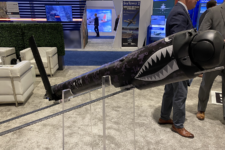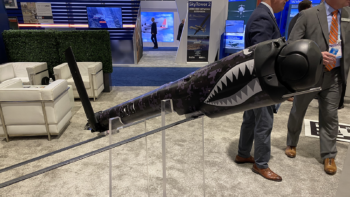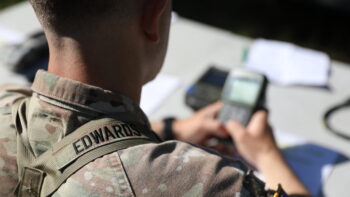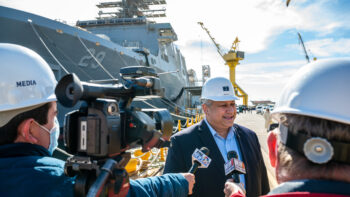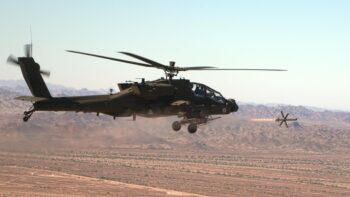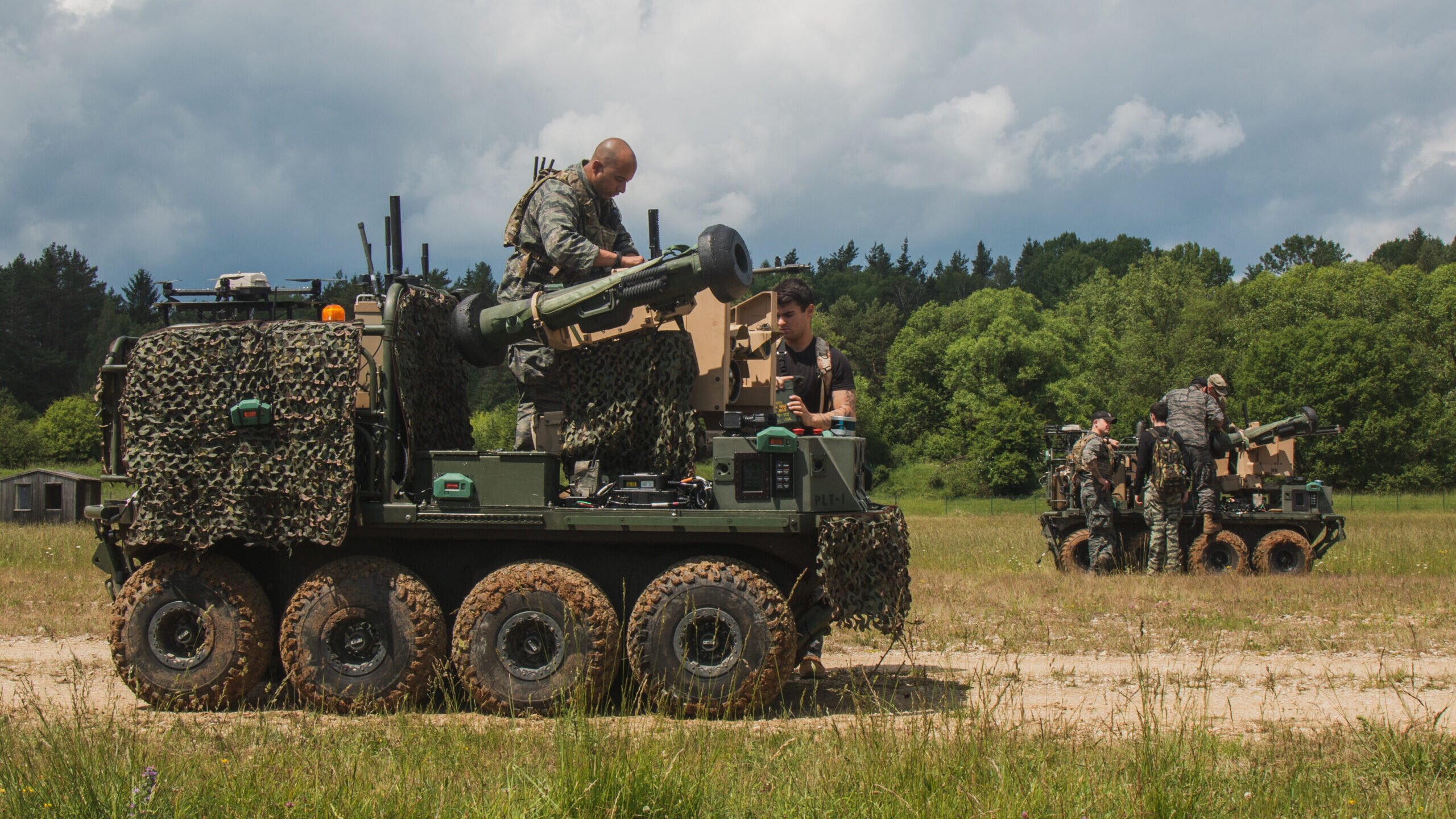
U.S. Soldiers assigned to 1st Battalion, 4th Infantry Regiment are given instruction on the use of the Project Origin robotic combat vehicle in the Hohenfels Training Area, Germany, June 6, 2022. (U.S. Army photo by Spc. Christian Carrillo)
WASHINGTON — Robots blocking intersections and landing zones. Robots making contact with the enemy ahead of incoming special operators. And robots slipping behind enemy lines to cause mayhem at enemy airfields.
These concepts have been percolating for years on paper as the US Army tried to figure out how best to incorporate unmanned vehicles into the battlefield. They have also all been successfully tested in real-world conditions, thanks to an effort called Project Origin out of the Army’s Ground Vehicle Systems Center.
The goal: figuring out not just the limits of the technology, but what concepts of operation actually work and how soldiers will interact naturally with their new robotic comrades in arms.
“Those are the really perfect venues for exploiting the weaknesses in the platform [and] figuring out what we need to do to address those,” Todd Willert, Project Origin program manager at the Ground Vehicle Systems Center, told Breaking Defense in a September interview. “It’s critically important because in those environments we don’t really know when we’re going to get attacked, or, you know, what size element is gonna attack us because it’s live play.”
As part of the US Army’s multi-billion modernization journey, the service is developing a family of three robotic platforms, formally known as the Robotic Combat Vehicle (RCV) effort with a large, medium and small variants. The RCV initiative is run by the Next Generation Combat Vehicle Cross-Functional Team and Program Executive Office Ground Combat Systems. For now, all the Project Origin vehicles are eight-wheeled platforms about the size of a small car, designed to carry multiple payloads, and are meant to inform the kinds of vehicles the Army will use to fill out its RCV fleet.
After three years of Project Origin, the robotic vehicle demonstrators that have been in the field have shaped how the Army thinks about the capabilities that a robot can provide and its approach to the acquisition program.
“A robot, more or less, is a system of systems. It’s comprised of the software, the autonomy, the payload interface, the user interface and the data management systems,” Maj. Cory Wallace, the robotic combat vehicle lead for the Next Generation Combat Vehicle Cross-Functional Team, told Breaking Defense. “So viewing a robot in that context, what Origin does is, we’re able to collect the lessons learned from those particular areas (or) subsystems, and then scale them to the level of relevancy within the RCV (program).”
Since the effort kicked off in 2019 with four vehicles, Project Origin has participated in nine experiments with soldiers, with three more planned through June next year. With each event, Project Origin tests out new ideas that, if they work in the tactical environment, the Army then looks to add to the requirements for the broader RCV program. By the end of this year, the program will have more than a dozen vehicles.
So far, Project Origin has demonstrated the wide range of ways it can impact the battlefield from reconnaissance missions to delaying enemy attacks to speeding up friendly forces’ pace of operation. Given the success in varied missions, the Army plans to continue testing Project Origin through at least 2025.
“We need to take it out to the worst environments … put them through their paces in horrible weather, horrible mud with tired operators and see how they perform,” Wallace said. “It serves this fantastic acid test for technology that may or may not be relevant.”
Refining Battlefield Capabilities
In 2019, before there was a Project Origin, a US Army unit in Germany received notice that it would receive the Small Multipurpose Equipment Transport (S-MET) vehicle, a small platform that hauls soldier equipment alongside them. The unit went back to the Army’s Combat Capabilities Development Command and asked, “What else can it do?” according to Willert.
The question sparked a series of conversations within the Army that ultimately led to the Project Origin vehicle, Willert said. The Ground Vehicle Systems Center integrated different payloads onto the vehicle, loaded it up with the autonomous and teleoperations capabilities. After tinkering for a few more months, GVSC took the vehicle to its first soldier event back in Germany in March 2020. Since then, Project Origin has aimed to experiment with soldiers every six months, Willert said.
“After the first experiment … in Germany back in 2020, we realized we had lightning in a bottle,” Wallace said. “This thing was light, it was agile. We could do multiple iterations over time.”
Since that first exercise with soldiers, Project Origin robotic vehicles have fought alongside infantry, armor and special operations units as they train for future missions. Each passing exercise gives the Army more data about how soldiers will interact with robots on the battlefield and informs what capabilities robots can be packed with in battle.
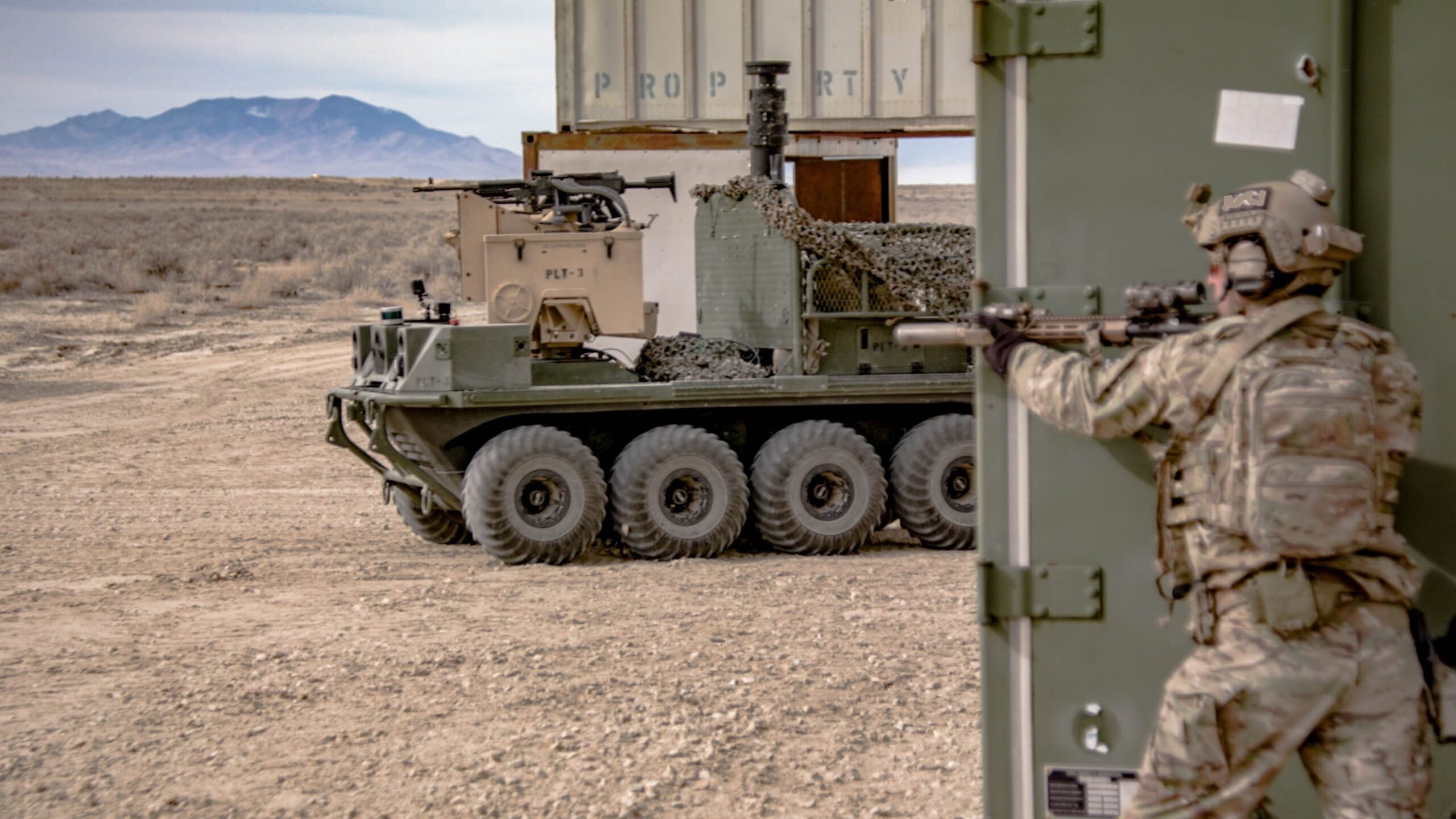
Army Green Berets from the 1st Special Forces Group conducted two weeks of hands-on experimentation with Project Origin unmanned systems at Dugway Proving Ground, Utah.(Jerome Aliotta/US Army))
For example, last September, the Project Origin vehicle integrated into the adversary force at a Joint Readiness Training Center rotation at Fort Polk, La. During that exercise, the RCV surrogate successfully blocked intersections and helicopter landing zones, taking tactical risks that could be deadly for soldiers.
At a June exercise in Germany, the unmanned platform snuck behind enemy lines and fired a smoke grenades on an unsuspecting forward area refueling point, preventing attack helicopters from responding to an incoming air assault. In another training exercise with special operators, a Project Origin vehicle, remotely controlled by two Special Forces soldiers, made initial contact with an opposing force and cleared the outside of the building before the Green Berets went in.
With each exercise, the Army learned a little bit more about how it can deploy its metallic sidekicks.
“The winners we’ve identified [for] payloads are the mobile smoke observation package, counter-UAS, and tethered-UAS,” Wallace said. “Now we’re starting to work on some of the more multi-domain aspects of the payloads. We wouldn’t have been able to get where we are without these rapid and iterative approaches.”
The robot also speeds up the pace of operations on the battlefield because commanders can use Origin for cUAS or electronic warfare without waiting for the capabilities to be delivered from higher headquarters.
“Being able to provide that capability of point of demand significantly increases the tempo of the organic formation of maneuver,” Wallace said.
As different Origin payloads are mixed and matched throughout the process, the service has also learned a key reality: Regardless of what the onboard systems are, they are going to have to be able to communicate and pass data, relying on a robust network.
“The most significant lesson learned is that the limiting factor of the RCV’s utility is going to be the network,” Wallace said. “You could have the best cameras, the best weapon system, the most advanced technology on the system, but if you don’t have a robust and adequate transport layer to move that data — what the robot is seeing — to the operator and then in turn, transport the commands from the operator to the robot, it’s not going to provide its value.”
Open Questions
After several years of experimenting with different payloads and determining which are most effective, Willert said that Project Origin “shifted” its approach in the last year away from focusing on the technical capabilities of payloads and towards determining where in the formation the robots’ payloads are most effective.
“We’ve seen that robotic systems are very good across all echelons of the fight, from the [logistics] trail in the back to the operations center, mid-tier, to the tactical edge of the battlefield,” Willert said. “Our challenge now is figuring out what are the payloads and behaviors to attack each of those echelons and then prioritize them.”
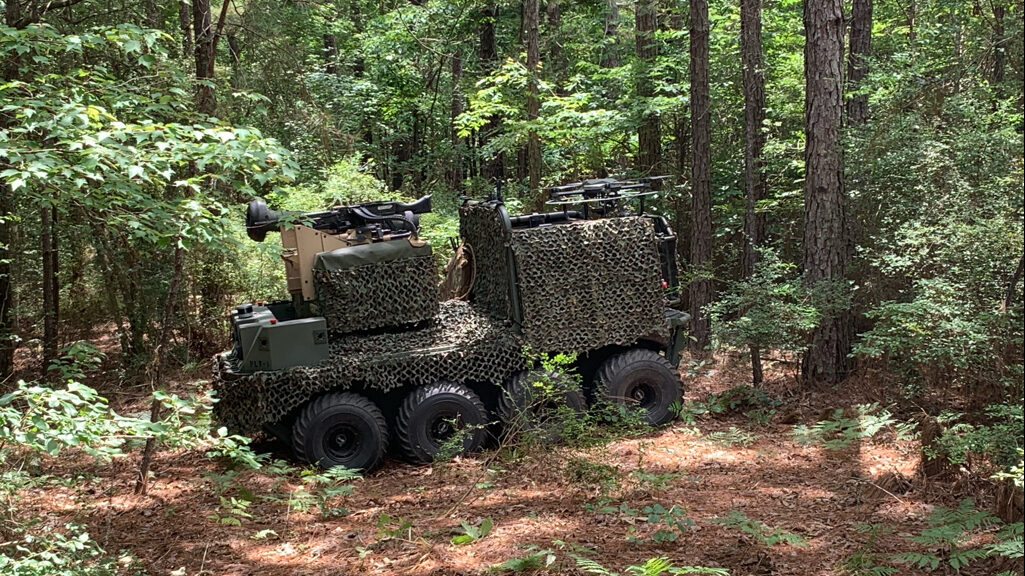
The Project Origin vehicle, a surrogate for Army Robotic Combat Vehicles, is seen at the Joint Readiness Training Center at Fort Polk, Louisiana, in September 2021. (Dan Heaton/US Army)
The Origin team also continues to learn more about how the unmanned vehicle interacts with soldiers and commanders. While the team noticed that commanders are more willing to take risk when armed with the robot because a human life isn’t at stake, they’re wary of exposing the bots too much; there’s only a finite number of the expensive platforms, after all. Willert didn’t want to get into specifics, but said the team is working through ways to protect the vehicle as commanders use it in more aggressive ways.
“We want them to kind of treat it as a teammate and not just something that exposes the enemy so that they have to engage it,” Willert said. “We’re pretty excited about figuring out how to still make the enemy make suboptimal decisions because of the unmanned system on the battlefield, but also protect the asset because we don’t want it to be a one-time use.”
Other questions linger as well. For example, Wallace said one of the important is whether an RCV operator would be its own specific Military Occupational Specialty (MOS) or another MOS, such as infantryman or cavalry scout, trained to be an operator.
Additionally, the team wants to determine what the right mix of RCVs and payloads is within the service’s formations. For example, Stryker brigades will have different payload needs than an infantry brigade or an armored brigade.
The Project Origin vehicle will participate in Project Convergence 22, currently underway, and has a soldier experiment in Alaska planned in the spring, with another event planned in Europe in the summer. The efforts are all part of ensuring that when the robots actually go into the field in a real combat situation, they’re effective tools for their real-life counterparts.
“We’re not pushing out a box … full of pieces, parts and payloads that may or may not be relevant,” Wallace said.
